INSIDE BOHEMIAN ESCAPES, HOW CREATIVES RECREATE
PLUS JASON MIDDLEBROOK + NATURE’S GEOMETRY
FEATURED IMAGE (TOP)
White Light, White Heat. A chill palette and found objects make William Waldron’s New Lebanon retreat hot (as in, cool).
Bohemian Escapes
Three Country Retreats, Three Points of View
While some New Yorkers flee for far-flung climes during summer months, many in the creative class find respite within a short car ride from sunbaked city streets. In these local escapes a bohemian spirit prevails; rooms and spaces hew toward the offbeat, sometimes eccentric, and, above all, personal. Here, we take a look at some spaces that artists and creatives have carved out for dreaming during the warmer months.
“This room is my sanctuary,” says the globe-trotting interiors photographer William Waldron of the living room in his 1760 Dutch Colonial farmhouse in New Lebanon, New York, that he shares with his wife, Malene Waldron. Their home is a rural counterpoint to the couple’s Soho loft. Waldron, who is renowned for quiet, soulful architectural photography, applies a similarly studied simplicity to his home.
“This is an old farmhouse—and I rather loathe ‘country style’ but I am very drawn to a cool, Northern European palette,” which suits Malene, who is Danish, perfectly. To that end, the walls are covered in Venetian plaster that William applied himself, and the white-painted floors accentuate the simple lines of the furniture it holds—a white-painted vintage bench coolly reminiscent of Gustavian furniture, a garden chair, and a pair of nesting tables that did not come as a set. As befits the Waldrons’ roaming ways, one table was salvaged from a Manhattan sidewalk and then covered in plaster (another DIY project), while the antler displayed on top is from a Boy Scouts sale in Jackson Hole, Wyoming. A bundle of weeds snipped from the side of the road springs from a blue pitcher, an example of the Waldrons’ penchant for finding poetry in the unlikely.
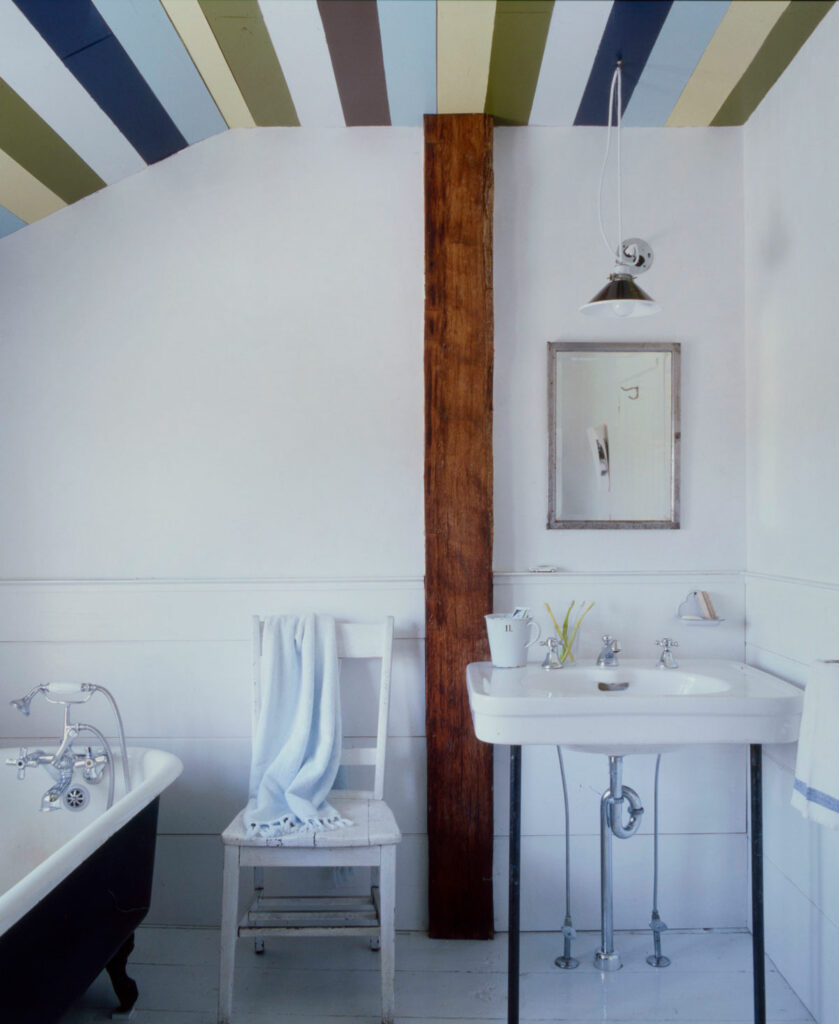
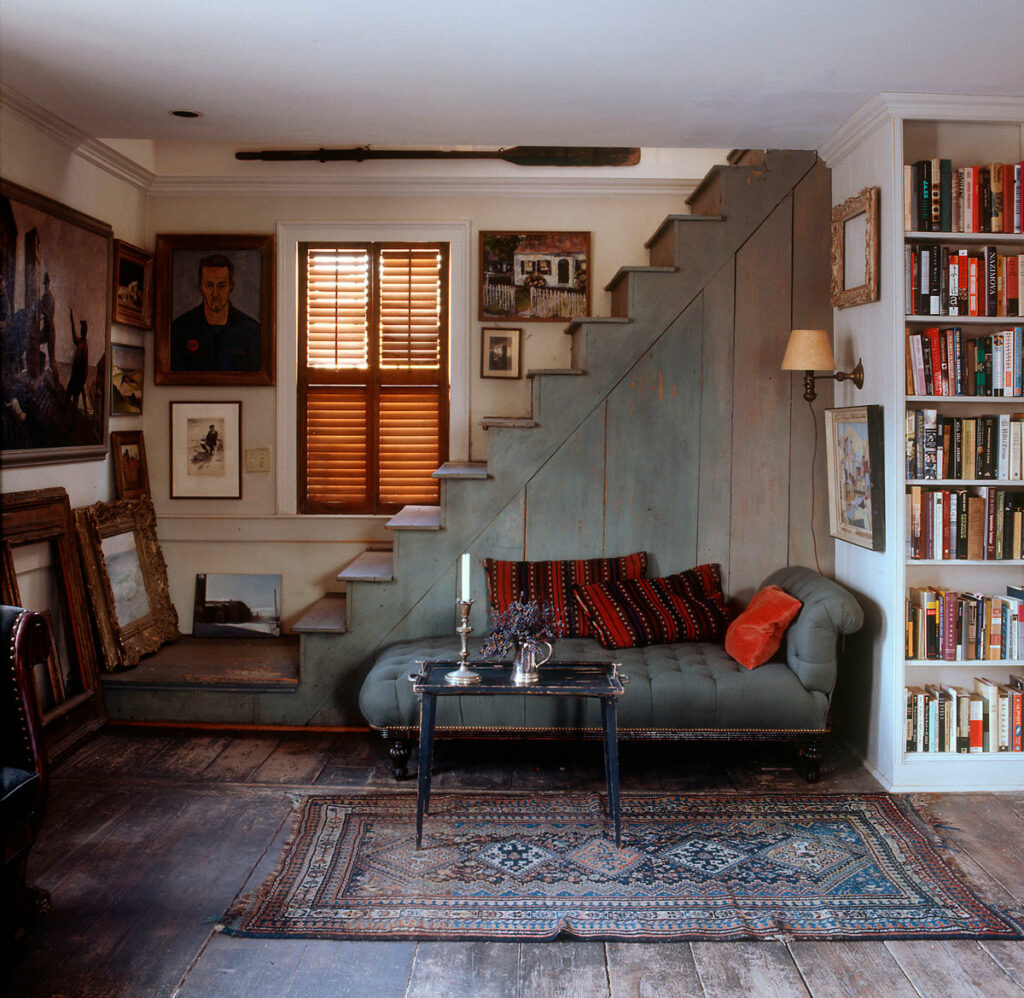
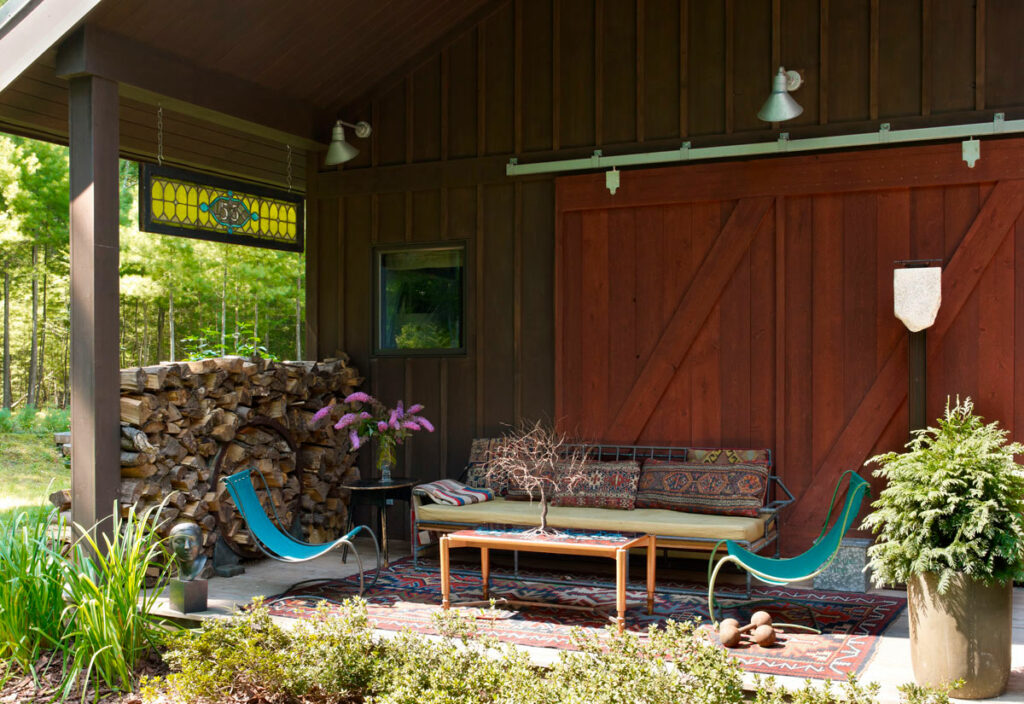
Michael Trapp, a designer of both interiors and gardens, spends much of the year in Southeast Asia and Europe sourcing patinarich treasures for his eponymous and much-adored shop in West Cornwall, Connecticut. In an upstairs room, sometimes used as a guest bedroom and sometimes for scheming spaces (“it’s a great room
to spread out in,” remarks Trapp), the walls celebrate the irregularities of the structure’s original plaster. “They’d been covered by hideous wallpaper,” he says of the discovery. In keeping with Trapp’s signature style, everything in the room is a found object—the draperies are simply handwoven French linen sheets tacked in place, and the 19th-century column was found in Cincinnati. The cushions are covered in Turkmen kilim scraps.
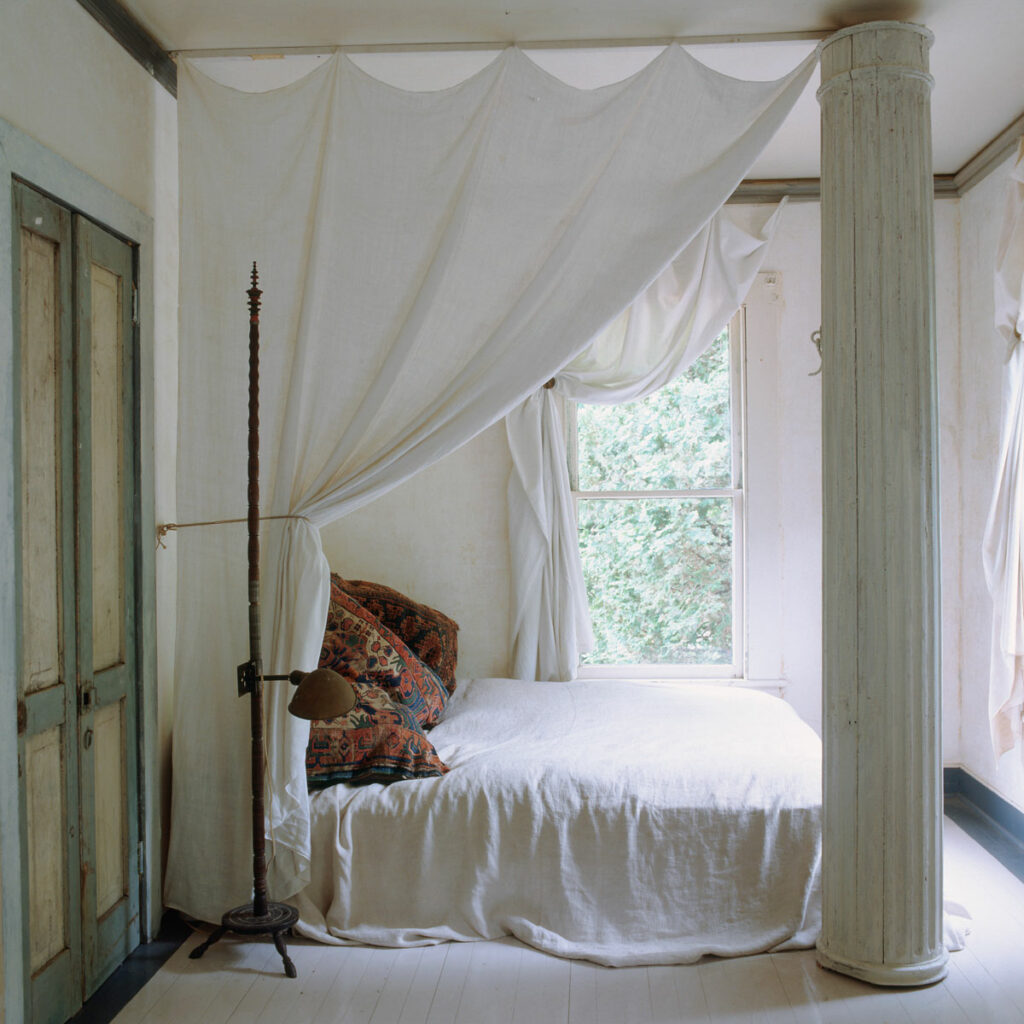
In the Berkshires living room of Cortney and Robert Novogratz, another crisp white on the walls—in this case, Linen White from Benjamin Moore—also offsets the dynamism of unexpected arrangements of furniture and objects. The Novogratzes are not only prodigious in the design world, with multiple home lines and a business restoring and designing homes, but also they have seven children. Their home is a family hub: son Breaker, a musician, often plays the Samick piano. “We spend summer days in the pool hosting big barbecues, and days usually end with singalongs,” says Robert. A high-style Venetian mirror from the 1800s is juxtaposed by a duo of spare Swedish chairs from the mid-century. A painted blue table found in Hudson adds a powerful and cheerful jolt of color.
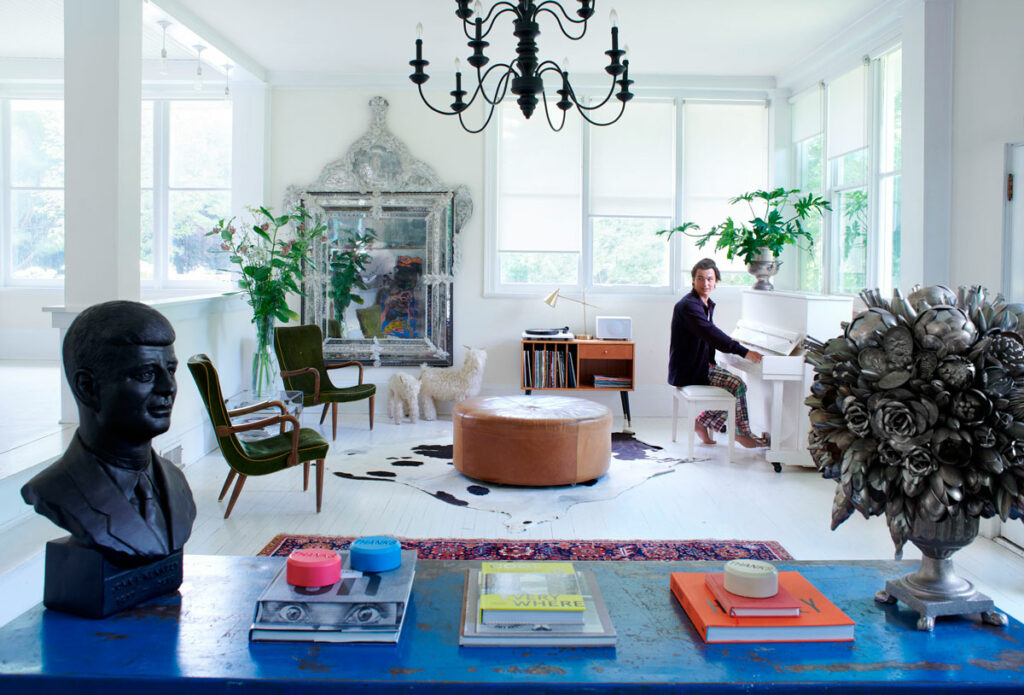
An artfully uncontrived interior is a hard thing to pull off, but for these creatives and their summer retreats, it’s a natural extension of themselves—their professional and personal points of view are one in the same. “This house is like a nest I can retreat to,” says Waldron. “It holds me.”
Gilding the Lily
Jason Middlebrook and Nature’s Geometry
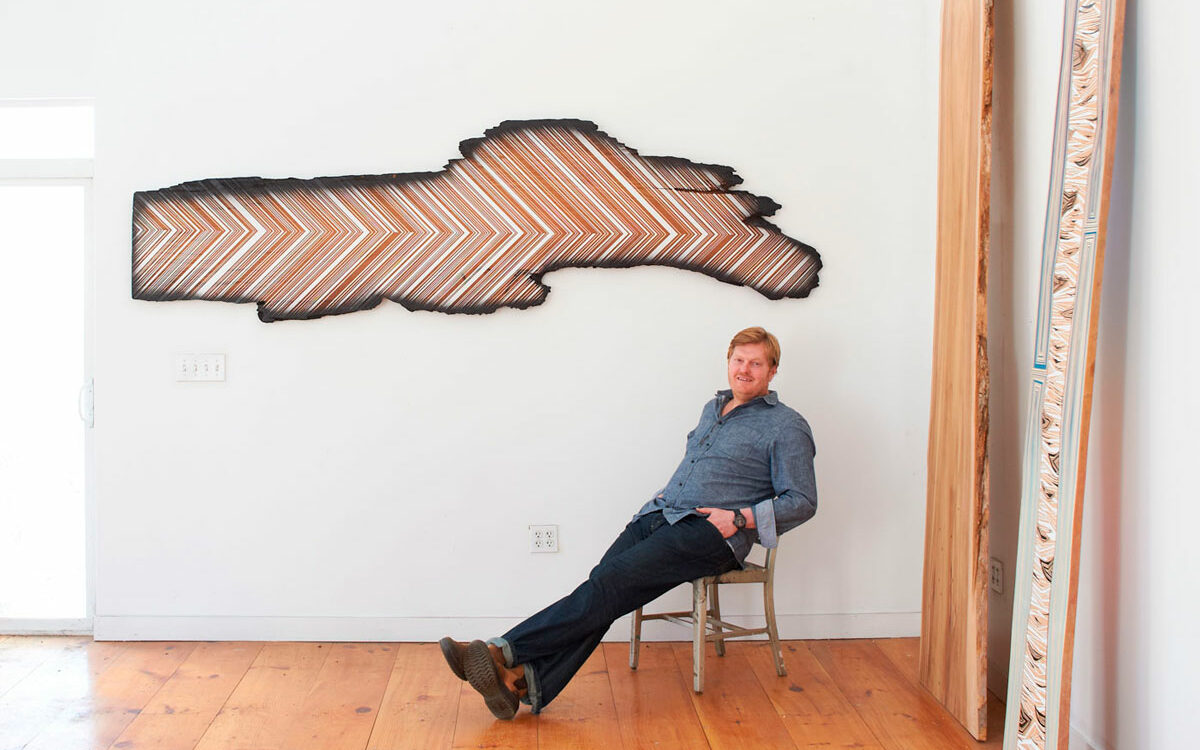
Inspired by the irregular contours of vertically sawn slabs of timber, artist Jason Middlebrook uses the wood’s integral geometries—graining, rings—as inspiration for abstraction. In his wall works, wildly colorful fractals, chevrons, 3-D mazes, ziggurats, and angular roses are launched by natural forms and textures in the wood. As Middlebrook explained in an Art + Auction profile, it’s “the shapes, I just can’t get over the shapes.”



